Open-air shows were highly popular in summer seasons. The Jolly Tars Concert Party was the best known of the entertainers to visit Cleveleys between the wars. A nine-strong family team, The Jolly Tars regularly entertained huge crowds on the promenade, with their ‘Great Benefit Night Programme’ (on 15 August 1931) attracting a 2,000-strong audience – a ‘huge success’.
Text about The Jolly Tars.
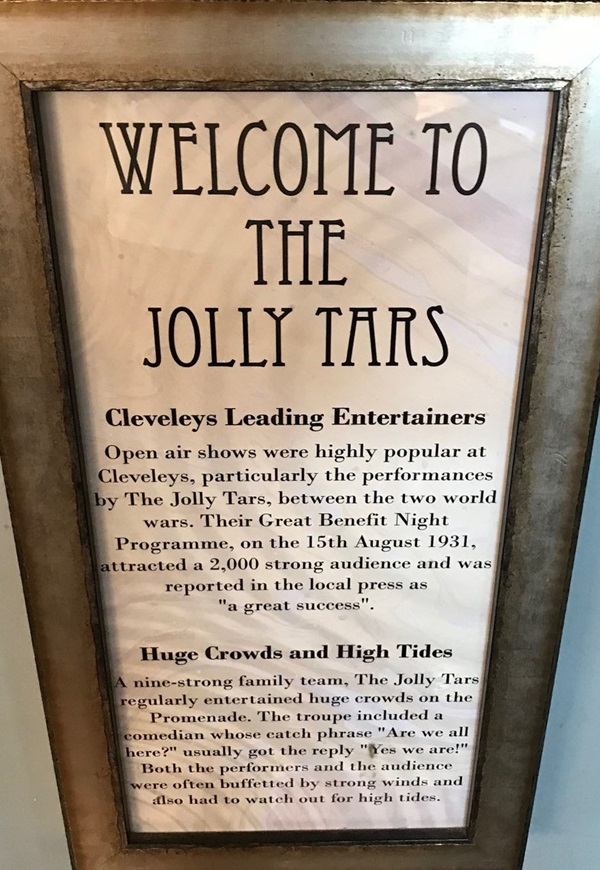
The text reads: Cleveleys Leading Entertainers
Open air shows were highly popular at Cleveleys, particularly the performances by The Jolly Tars, between the two world wars. Their Great Benefit Night Programme, on the 15 August 1931, attracted a 2,000 strong audience and was reported in the local press as “a great success”.
Huge Crowds and High Tides
A nine strong family team, The Jolly Tars regularly entertained huge crowds on the promenade. The troupe included a comedian whose catch phrase “Are we all here?” usually got the reply “Yes we are!” Both the performers and the audience were often buffeted by strong winds and also had to watch out for high tides.
Text about the history of Cleveleys.
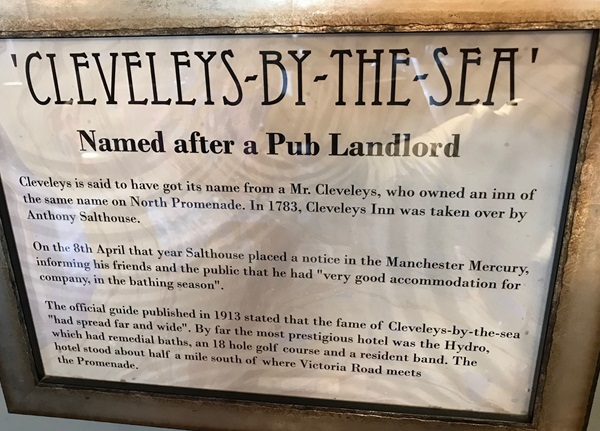
The text reads: Cleveleys is said to have got its name from a Mr Cleveleys, who owned an inn of the same name on North Promenade. In 1783, Cleveleys Inn was taken over by Anthony Salthouse.
On the 8 April that year Salthouse placed a notice in the Manchester Mercury, informing his friends and the public that he had “very good accommodation for company, in the bathing season”.
The official guide published in 1913 stated that the fame of Cleveleys-by-the-sea “had spread far and wide”. By far the most prestigious hotel was the Hydro, which had remedial baths, an 18 hole golf course and a resident band. The hotel stood about half a mile south of where Victoria Road meets the promenade.
A photograph of beach entertainers named The Frolics, 1912.
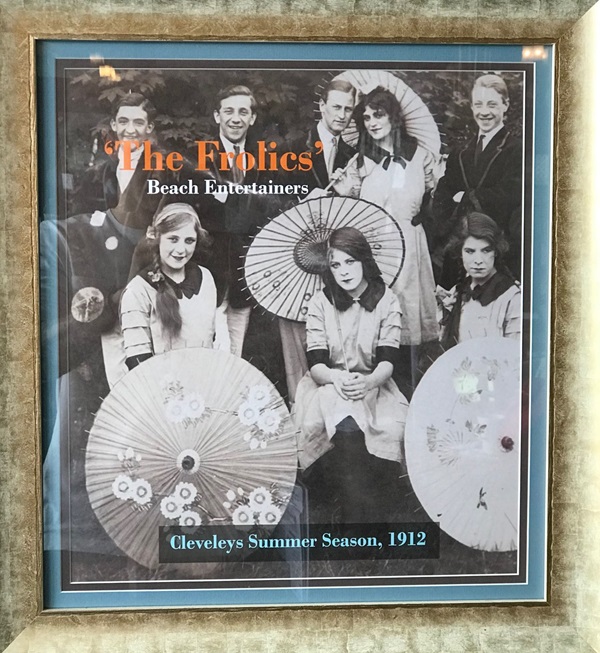
A photograph of Victoria Road.
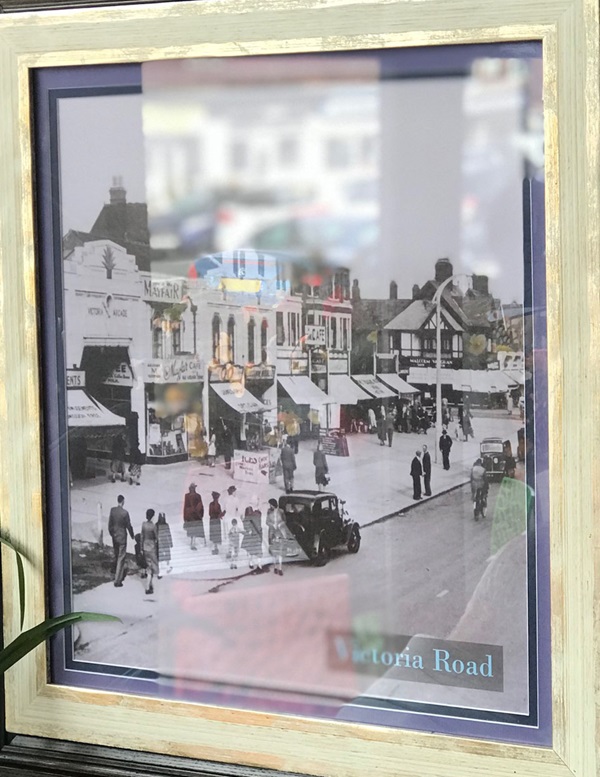
Photographs, illustrations and text about the Cleveleys Cottage Exhibition.
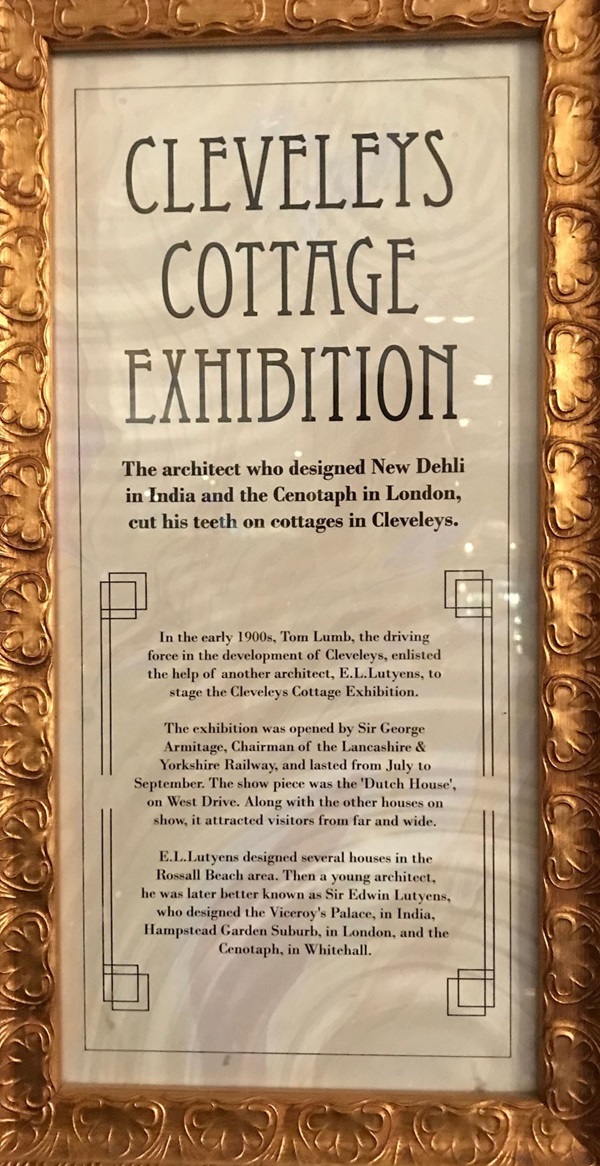
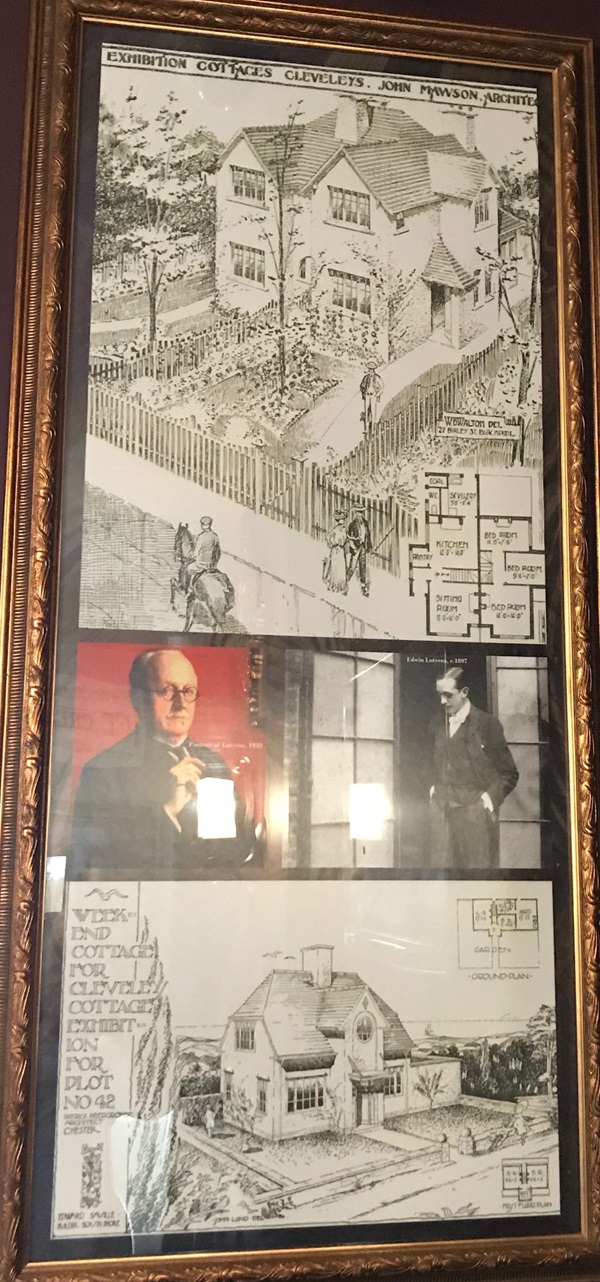
The text reads: The architect who designed New Delhi in India and the Cenotaph in London, cut his teeth on cottages in Cleveleys.
In the early 1900s, Tom Lumb, the driving force in the development of Cleveleys, enlisted the help of another architect, EL Lutyens, to stage the Cleveleys Cottage Exhibition.
The exhibition was opened by Sir George Armitage, chairman of the Lancashire & Yorkshire Railway, and lasted from July to September. The show piece was the Dutch House, on West Drive. Along with the other houses on show, it attracted visitors from far and wide.
EL Lutyens designed several houses in the Rossall Beach area. Then a young architect, he was later better known as Sir Edwin Lutyens, who designed the Viceroy’s Palace, in India, Hampstead Garden Suburb, in London, and the Cenotaph, in Whitehall.
Photographs and text about Roy Castle.
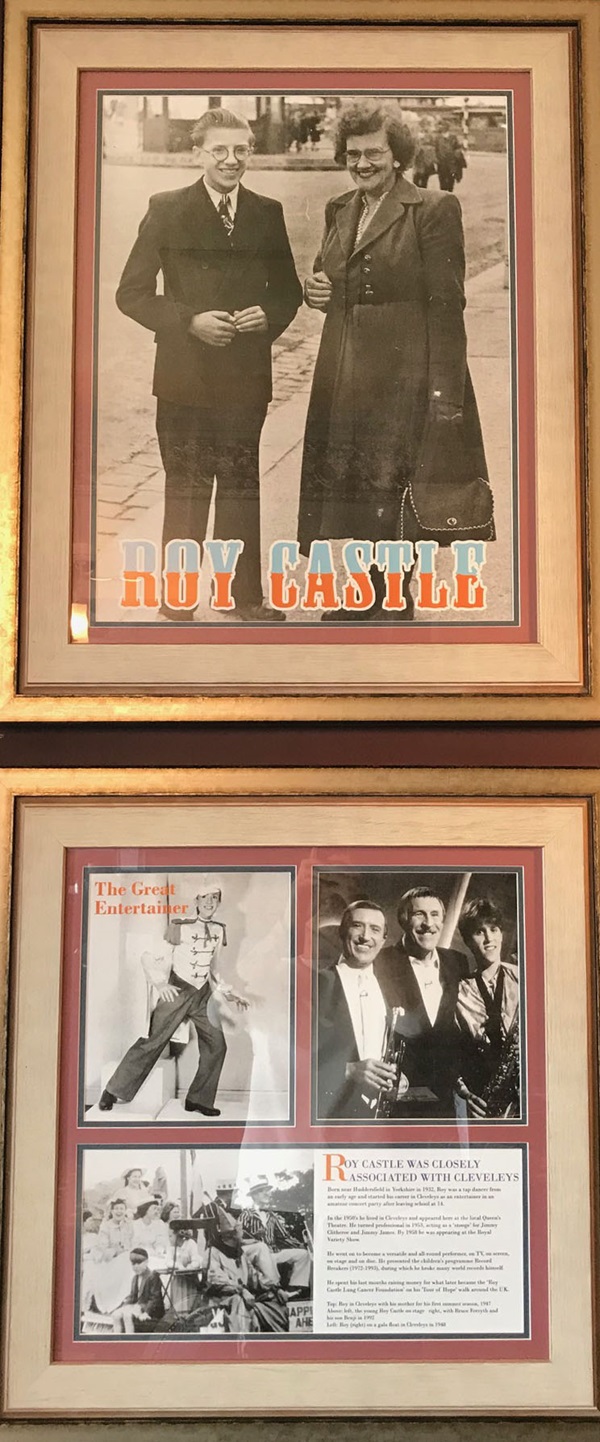
The text reads: Born near Huddersfield in Yorkshire in 1932, Roy was a tap dancer from an early age and started his career in Cleveleys as an entertainer in an amateur concert party after leaving school at 14.
In the 1950s he lived in Cleveleys and appeared here at the local Queen’s Theatre. He turned professional in 1953, acting as a ‘stooge’ for Jimmy Clitheroe and Jimmy James. By 1958 he was appearing at the Royal Variety Show.
He went on to become a versatile and all round performer, on TV, on screen, on stage and on disc. He presented the children’s programme Record Breakers (1972-1993), during which he broke many world records himself.
He spent his last months raising money for what later became the Roy Castle Lung Cancer Foundation on his Tour of Hope walk around the UK.
Top: Roy in Cleveleys with his mother for his first summer season, 1947
Above: left, the young Roy Castle on stage, right, with Bruce Forsyth and his son Benji in 1992
Left: Roy (right) on a gala float in Cleveleys in 1948.
A metal sculpture entitled The Sea, by Jason Paterson.
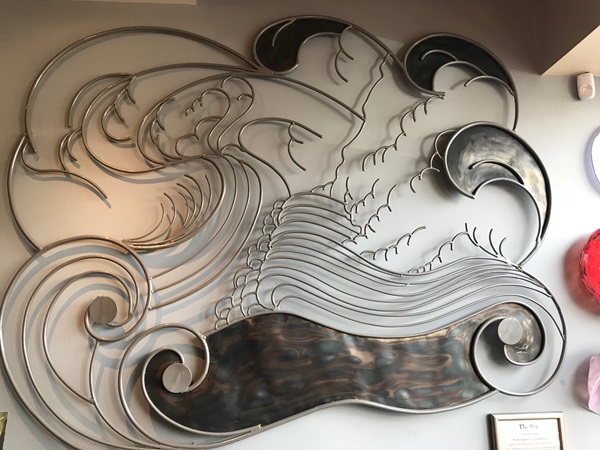
Glass sculptures entitled Floating Forms, by John Ditchfield.
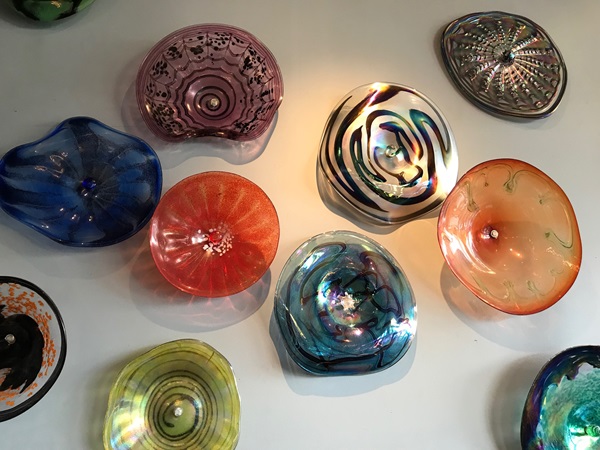
External photograph of the building – main entrance.
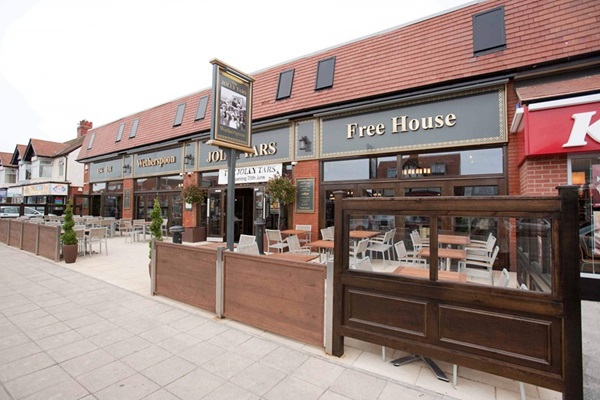
The historic images of Cleveleys displayed in this pub, are taken from the website, rossallbeach.co.uk – a postcard history of Fylde and Wyre – and the collection of the website’s creator Phil Barker, with contributions from the collection of Robin Chadwick.
J D Wetherspoon would like to thank Phil and Robin for their contribution to the local history display in The Jolly Tars.
If you have information on the history of this pub, then we’d like you to share it with us. Please e-mail all information to: pubhistories@jdwetherspoon.co.uk